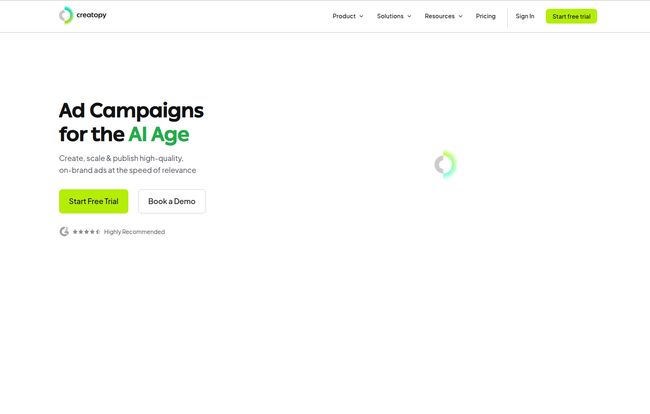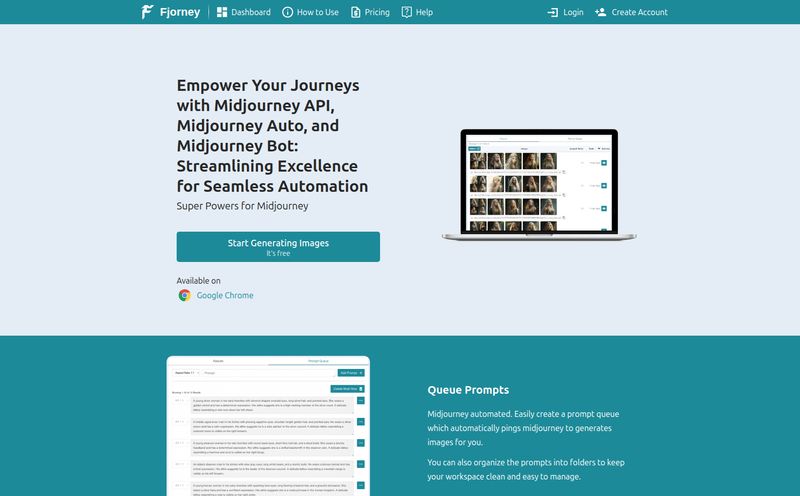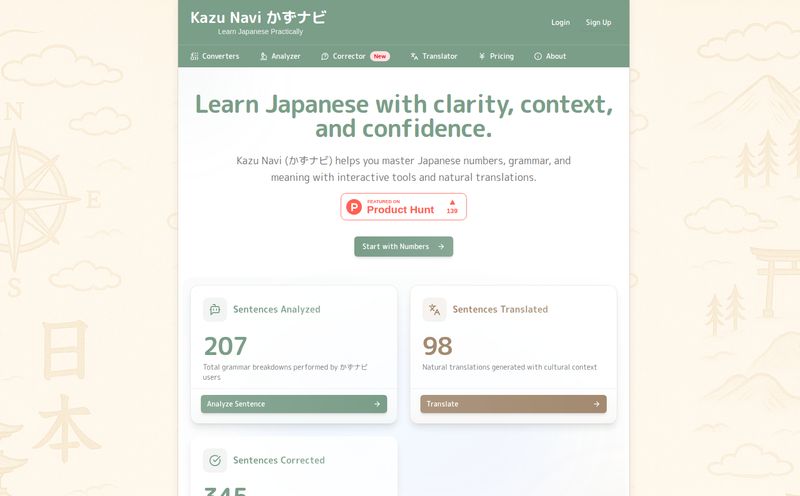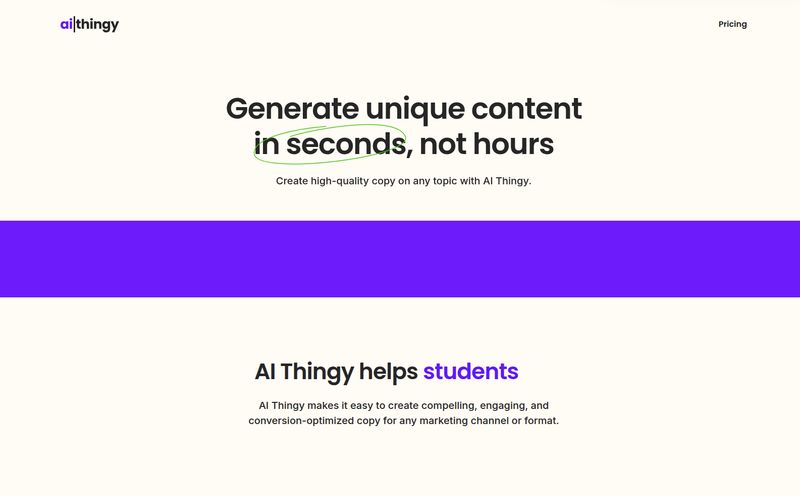I still get a cold sweat thinking about some of my early agency days. The brief would land, simple enough: a new display ad campaign for a client. But then came the spec sheet. We needed versions for Google Display Network, Facebook, Instagram, LinkedIn... each with about a dozen different sizes. That's not even counting the A/B test variations. My designer, a brilliant creative, would just look at me with the most soul-crushed expression. Days would be spent just resizing, tweaking text, and exporting endless JPEGs and GIFs. It was a creative-killing, soul-sucking process.
We’ve all been there, right? That repetitive grunt work that stands between a great idea and a live campaign. It’s the reason so many brilliant campaigns get scaled back or just never see the light of day. So when I started hearing the buzz about platforms like Creatopy, which promise to automate this whole mess with AI, my first reaction was skepticism. My second was intense curiosity.
Is this just another design tool, or is it something more? I’ve spent some time kicking the tires, and I'm ready to spill the tea.

Visit Creatopy
So, What Exactly is Creatopy?
Let's get one thing straight: calling Creatopy just an “ad design tool” is like calling a Swiss Army knife just a “knife.” It misses the point entirely. At its heart, Creatopy is an AI-driven creative automation and management platform. It’s built for the specific pain points of marketers, agencies, and in-house teams who need to produce a high volume of quality, on-brand ad creative, and fast.
Think of it less as a blank canvas and more as a high-tech creative assembly line. You provide the brand guidelines and the core ideas, and it helps you manufacture, scale, and even optimize the final products across all the channels you care about. It’s a tool designed not just for making pretty pictures, but for improving campaign performance.
The Features That Actually Matter to Marketers
A feature list is just a list until you see how it solves a real problem. And believe me, Creatopy’s features target some of the biggest time-sinks in the marketing world. Let’s break down the ones that really caught my eye.
The AI Banner and Image Generator: Your New Best Friend
Okay, the AI part. This is where the magic (or at least some very clever code) happens. You can feed it a URL, some text prompts, or existing brand assets, and its AI banner generator will spit out a whole set of ad variations to get you started. Are they all perfect, award-winning masterpieces? Not always. But they are a fantastic starting point. It completely demolishes creative block.
The AI Image Generator is also baked in, which is becoming standard fare these days, but its integration here is what's clever. You can generate a background or a product mockup right inside your ad design, without having to jump over to Midjourney or DALL-E and break your workflow. It's about efficiency.
Brand Kits and Templates: The Guardians of Consistency
For me, this is almost worth the price of admission alone. How many times has a client’s logo been stretched, the wrong hex code used, or an off-brand font snuck into an ad? Creatopy’s Brand Kit feature is the cure. You upload your logos, color palettes, fonts, and other brand assets once. From then on, every single creative you or your team builds is locked into that brand identity. It's a brand manager’s dream and a fantastic way to ensure consistency, especially when you have multiple people working on campaigns. It’s the end of brand guideline PDFs that nobody reads.
Scaling and Automation: From One Ad to One Thousand
This is the core of the platform. You design one master ad, and with a few clicks, the Banner Resizer can generate every other size you need—from a tiny mobile banner to a massive leaderboard ad. And it’s smart about it. It doesn’t just crop and stretch; it allows you to adjust the layout for each size to make sure it looks good. You can then take that set and generate dozens of variations by connecting it to a data feed. Imagine changing the product, price, and call-to-action on 50 different ad banners simultaneously just by editing a single spreadsheet. That’s the power we're talking about. It transforms a week of tedious work into an afternoon task.
Live Data and A/B Testing: Making Ads Smarter, Not Just Prettier
Here’s where it gets really juicy for performance marketers. Creatopy allows you to connect your ad creatives to live data sources. For an e-commerce brand, this means your ads could automatically update to show the latest sale price or reflect real-time inventory. For a travel company, you could show dynamic pricing for flights or hotels. This turns static ads into living, breathing marketing assets. And of course, it supports robust A/B testing, so you can finally get definitive answers on which headline or button color actually drives more conversions, without the setup headache.
Let's Talk Money: The Creatopy Pricing Situation
Alright, the elephant in the room. This isn't a free-for-all tool. As of my review, I saw plans like their 'Automate' tier sitting around $249 per month when billed annually. For a freelancer just starting out or a small business with a tiny marketing budget, that number might make you wince. I get it.
But let's reframe this. This isn't a cost; it's an investment in efficiency. You have to do teh math. How many hours does your team currently spend on manual ad creation and resizing? Let's be conservative and say 15-20 hours a month. What’s your team's hourly rate? I bet that $249 starts looking like a bargain pretty quickly. It's aimed at teams and agencies where time literally is money, and bottlenecks in creative production directly impact revenue. My advice? Check their official pricing page for the latest plans and features, as these things can change.
Is It All Sunshine and Automated Banners?
No tool is perfect, and it would be dishonest to pretend Creatopy is. There are a few things to consider. First, there is a bit of a learning curve. If you're used to super-simple tools like Canva, the sheer number of options here can feel a little intimidating at first. You have to commit some time to learn the workflow to really get the most out of it.
Second, as we discussed, the price can be a barrier for some. Finally, there's the philosophical debate about AI and creative control. If you're a designer who loves to control every single pixel and agonize over kerning, the automated nature of Creatopy might feel a bit… restrictive. It’s designed for speed and scale, and sometimes that means sacrificing a tiny degree of artistic nuance. For 99% of ad campaigns, that's a trade-off worth making.
Who is Creatopy Really For?
After playing around with it, the ideal user profile becomes very clear.
- In-house Marketing Teams: Especially in fast-moving industries like e-commerce, travel, or iGaming where you're constantly running promotions.
- Performance Marketing Agencies: If you're managing ad accounts for multiple clients, the ability to maintain separate Brand Kits and quickly generate campaign creatives is a game-changer.
- Companies Focused on Scalability: If your goal is to go from 10 ads a month to 1000, you simply can't do it manually. You need a platform like this.
Who is it not for? Probably the solo blogger who needs a couple of social media graphics a week, or the artistic purist who hand-crafts every single design element from scratch.
In the end, Creatopy isn't just another tool in the toolbox. It’s a whole new toolbox. It’s a shift in thinking about how ad creative gets done—moving from a manual, artisanal process to a streamlined, automated, and scalable system. It takes the robot work out of design, freeing up humans to focus on what they do best: strategy, ideas, and creativity. And for this old-school marketer, that sounds like a future I can get behind.
Frequently Asked Questions about Creatopy
- Can I use Creatopy if I'm not a professional designer?
- Absolutely. While it has powerful features, its template library and AI generator make it accessible for marketers who aren't design wizards. It helps you create professional-looking ads while staying within brand guidelines, which is often a non-designer's biggest challenge.
- What's the main difference between Creatopy and Canva?
- Think of it this way: Canva is a fantastic general-purpose design tool for everything from social posts to birthday cards. Creatopy is a specialized, high-performance platform built specifically for the demands of digital advertising at scale. Its strengths are in automation, data integration, and multi-format ad production.
- Can I import my existing Photoshop (PSD) files?
- Yes! This is a great feature. Creatopy has a PSD editor that allows you to import your existing Photoshop files and turn them into editable, scalable templates within the platform. This is perfect for teams looking to transition their existing workflow.
- How does Creatopy integrate with ad platforms like Google Ads or Facebook?
- Creatopy helps you create and export ad sets perfectly optimized for various platforms. While it's not a campaign management tool that pushes ads live for you, it integrates by providing the properly formatted creatives and even offers features to push them to certain networks, streamlining the process of getting your ads from idea to live campaign.
- Is there a free trial for Creatopy?
- Yes, they typically offer a free trial period. It's the best way to get a feel for the platform and see if its workflow is a good fit for you and your team before committing to a paid plan.
- Does Creatopy's AI also write ad copy?
- While its primary focus is on visual generation and automation, many AI features within these platforms are expanding. It can help generate headline ideas based on inputs like a URL, but its main power is currently on the design and production side of things.



